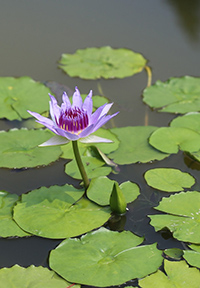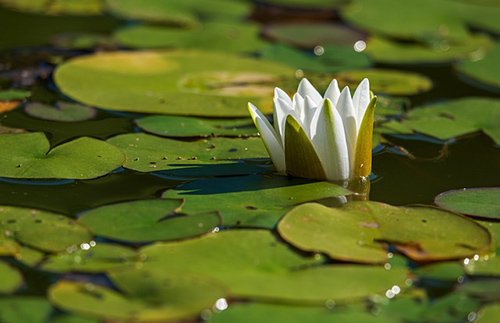Contents
The white water lily plant (Nymphaea alba L.) and the yellow water lily (Nuphar lutea [L.] Sibth.- Sm.), though belonging to different botanical genders, have very similar properties. The difference between them is the color of their flowers.

Healing Properties and Indications
The flowers and rhizomes of water lilies contain tannin and alkaloids (nymphalini and nupharin). The most outstanding property of these plants is anaphrodisiac; that is, they decrease sexual desire. The coldness and quietness of the places they grow suggest this. This was why water lilies were grown in monastery cloisters, though we have no proof they had ever achieved the desired results. Font Quer said that water lilies could also produce a reverse effect: excitation.
The 16th-century Spanish physician Andres de Laguna believed water lilies had calming properties. He said their root can “suppress and stop sexual dreams, and when drunk, frequently drunk, in a short time the unmentionable male member becomes weak and flaccid.” Today, water lilies are not used as much as medicinal herbs in past times.

Water Lily Plant Scientific Facts

- Scientific name: Nymphaea alba L.
- Similar species: Nuphar lutea (L.) Sibth.-Sm.
- French: Nenuphar.
- Spanish: Nenufar.
- Environment: Ponds, lagoons, and slow streams in forest regions.
- Description: A vibrant water plant of the Nymphaeaceae family, it has floating, heart-shaped leaves up to 30 cm in diameter.
- Parts of the plant used medicinally: The rhizome and the flowers.
How to use Water Lily
- Infusion with 30 g of flowers or ground rhizome per liter of water. Drink three cups daily.
DISCLAIMER: All content on this website is presented solely for educational and informational objectives. Do not rely on the information provided as a replacement for advice, diagnosis, or treatment from a qualified medical expert. If you are pregnant, nursing, or have any preexisting medical concerns, talk to your doctor before using any herbal or natural medicines.
REFERENCES
- George D. Pamplona-Roger, M.D. “Encyclopedia of Medicinal Plants.” George D. Pamplona-Roger, M.D. Encyclopedia of Medicinal Plants. Ed. Francesc X. Gelabert. vols. 2 San Fernando de Henares: Editorial Safeliz, 2000. 607. Print. [Water lily plant]
- https://www.herbazest.com/herbs/water-lily
- https://www.ohlilysnacks.com/blogs/lifestyle/the-health-benefits-of-water-lily-seeds
